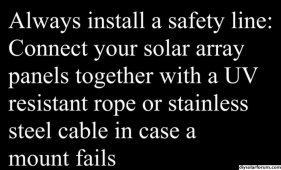Marine359
New Member
I love CIGS!
They perform way better than mono in real world camping situations. See my other post. I tested CIGS against mono. The panels cost more, but the array actually costs less than hard mono panels, when you add the cost of mounting hardware, plus paying somebody to install them. Then just wait for the leaks to start. I installed 3 CIGS panels in about 35 minutes DIY. No hardware, no holes in roof, and I can walk on them. In my mid-seventies, I wasn’t gonna get on my RV roof for hours struggling to install heavy mono panels, and hoping I wouldn’t cause a leak or have a hard panel come off and kill somebody. And I’ll certify that a 100w CIGS will produce more watts in a day than a 100w hard mono panel In real worl camping use. Especially in rain, clouds, or partial shade, the CIGS blows mono out of the water. You can trust Will Prowse. He’s good, but everything is under controlled lab like conditions. I don’t think he’s ever been boondocking in his life. CIGS wins on most fronts. I’m not affiliated with any product manufacturer. And my CIGS don’t seem any more affected by bird poop or dirt than mono panels. Don’t know where that myth comes from. They’re certainly easier to clean. Did I mention that you can walk on them, so hose and mop before a trip and you’re good to go. There’s something else you haven’t considered when comparing CIGS to mono. Efficiency numbers don’t mean diddly on their own. The CIGS panel produces more watts in a day than a same wattage mono because it’s Voc is almost double the Voc of a mono panel. The CIGS keep mppt controllers at or near maximum power point a higher percentage than mono due to its higher voltage. In real world use on an RV CIGS outperforms mono.
They perform way better than mono in real world camping situations. See my other post. I tested CIGS against mono. The panels cost more, but the array actually costs less than hard mono panels, when you add the cost of mounting hardware, plus paying somebody to install them. Then just wait for the leaks to start. I installed 3 CIGS panels in about 35 minutes DIY. No hardware, no holes in roof, and I can walk on them. In my mid-seventies, I wasn’t gonna get on my RV roof for hours struggling to install heavy mono panels, and hoping I wouldn’t cause a leak or have a hard panel come off and kill somebody. And I’ll certify that a 100w CIGS will produce more watts in a day than a 100w hard mono panel In real worl camping use. Especially in rain, clouds, or partial shade, the CIGS blows mono out of the water. You can trust Will Prowse. He’s good, but everything is under controlled lab like conditions. I don’t think he’s ever been boondocking in his life. CIGS wins on most fronts. I’m not affiliated with any product manufacturer. And my CIGS don’t seem any more affected by bird poop or dirt than mono panels. Don’t know where that myth comes from. They’re certainly easier to clean. Did I mention that you can walk on them, so hose and mop before a trip and you’re good to go. There’s something else you haven’t considered when comparing CIGS to mono. Efficiency numbers don’t mean diddly on their own. The CIGS panel produces more watts in a day than a same wattage mono because it’s Voc is almost double the Voc of a mono panel. The CIGS keep mppt controllers at or near maximum power point a higher percentage than mono due to its higher voltage. In real world use on an RV CIGS outperforms mono.
Last edited:




